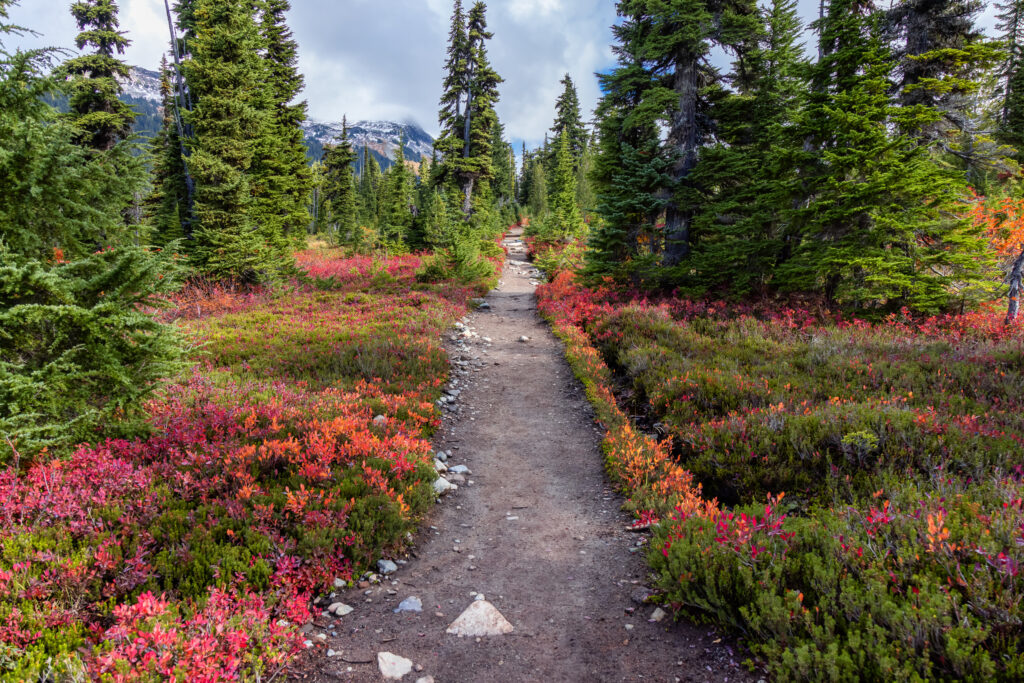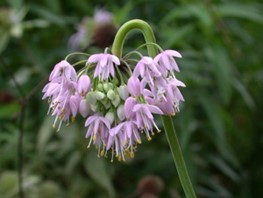“Most First Nations folks have a favourite berry, tree, or flower they grew up with,” says Alexandra (Nax̌nagəm) Thomas, a member of Tlowitsis First Nation and a fourth-year undergraduate student in the Department of Forest Resources Management at the University of British Columbia.
It’s about grounding yourself in the land you live on and connecting to it, she adds, and “by connecting to the land, you’re healing yourself.”
In many Indigenous communities, plants have a variety of uses. Some are edible, some are medicinal, and some are cultural.
spánanexw (spah-na-noo)
See it!

Spánanexw is a vegetable that holds significant value for the Sḵwx̱wú7mesh (Squamish) People and other Indigenous communities. The bulbs are harvested in April or May, immediately after flowering, and cooked in a pit for 24 hours to break down the inulin (starch) into fructose and caramelize the bulbs. English name: Camas
sí7semachxw (say-sem-ahch-kw)
See it!
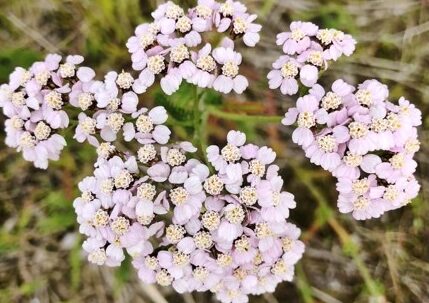
sí7semachxw is a remarkable herbal remedy. Its fresh leaves serve as a poultice, while dried powdered leaves slow or halt bleeding. The entire plant contributes to inflammation reduction. English name: Yarrow
lhásem (lha-sum)
See it!
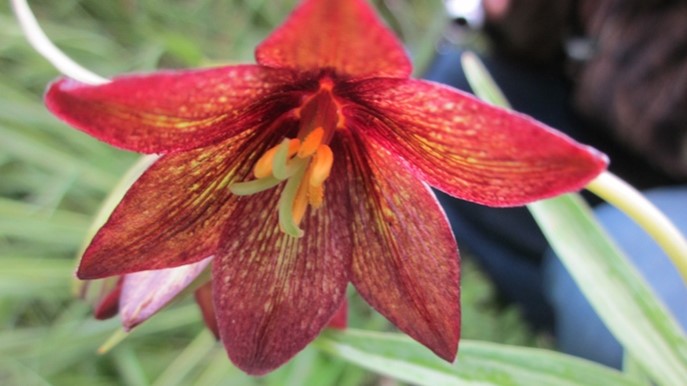
lhásem, a vital root vegetable in the lily family, thrives in estuary root gardens across BC. Traditionally cultivated by Indigenous communities, its bulbs, rich in rice-grain bulblets, ensure annual returns when replanted. English name: Northern Riceroot
ḵálḵay (call-kay)
See it!
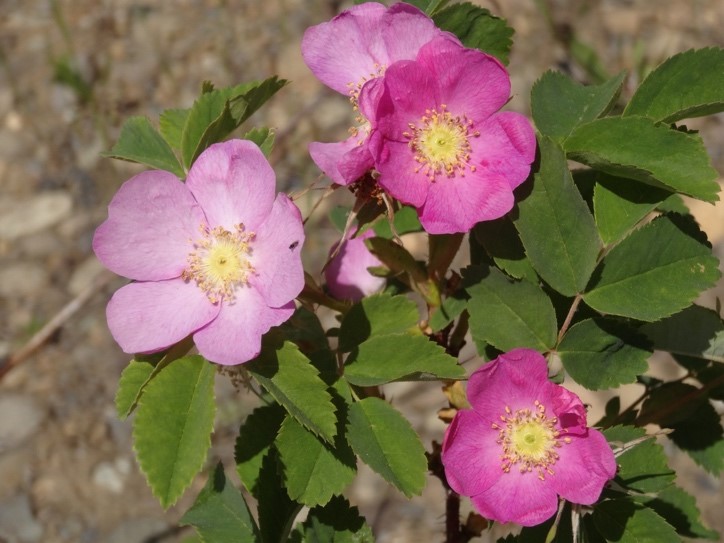
ḵálḵay is a vital food and medicine. Rosehips are rich in antioxidants and vitamin C, and the petals are also edible and offer calming medicinal benefits. English name: Wild rose
ḵweláwa (quell-ah-wah)
See it!
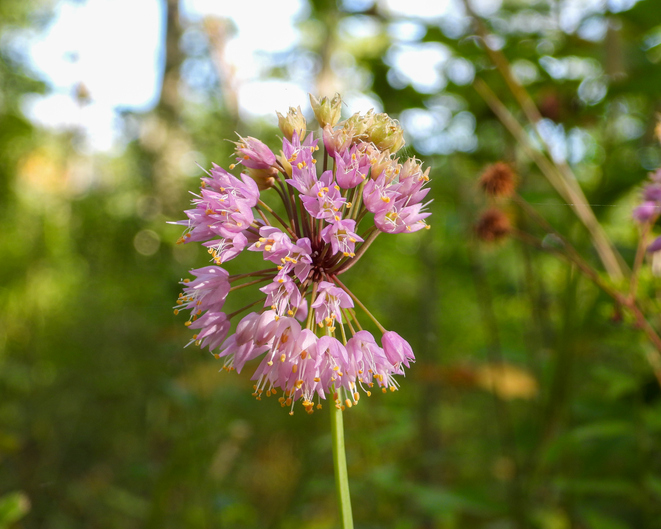
Kweláwa, a cherished wild onion among the Sḵwx̱wú7mesh People, is harvested alongside blue camas and similarly undergoes pit cooking. The entire plant, a delectable addition to stir fry or salad, is edible. English name: Nodding Onion
“How do people connect to these plants?” Alexandra asks. “And how can we make them grow here?”
Here is the Downtown Eastside (DTES) where Alexandra is leading a project to regreen the neighbourhood.
The DTES is the “historic heart” of Vancouver. It’s one of the city’s oldest neighbourhoods, it’s been a home for immigrant communities for decades, and its rich history of art, music, and social activism is still evident today.
It’s also where many Indigenous people and racialized minorities live, as well as significant populations of unhoused people, lower-income earners, people with chronic illnesses, and survivors of residential schools.
During heat waves, residents of the DTES, an area of the city with very little vegetation or tree canopy cover, are especially vulnerable to heat stroke, heat exhaustion, and other related illnesses.
Many residents live in single-room occupancy buildings with no access to air conditioning. And unhoused people don’t have many options when seeking out cool, indoor spaces, Alexandra notes, because of the stigma they receive from others. In April, an encampment EncampmentA temporary settlement for unhoused peoples, such as the makeshift homes on East Hastings Street that city crews dismantled, displacing residents who faced harsh weather conditions. The cycle of removal and return highlights the urgent need for sustainable solutions that address the root causes of homelessness and provide lasting support. was dismantled, taking away refuge and displacing several unhoused individuals.
Working with community members, individuals with Indigenous plant knowledge, the Carnegie Community Centre, and other organizations in the DTES, Alexandra’s project will create a community garden and patio at Carnegie (which many call “the living room of the DTES” she says) where people can seek shade and shelter.
“Our city is very green but a lot of what we're planting aren’t native plant species,” she says. “And we’re also disproportionately planting. Poorer communities have less green space, fewer trees, [and] fewer flower planters.”
“It’s a systemic thing — we can't start addressing climate issues until we address the fact that [they’re] also social justice issues.”
Planting more flowers, shrubs, and other greenery in the DTES will cool the environment, draw out heat and carbon dioxide, add moisture into the air, and block some of the sun’s radiation.
When planting begins, the focus will be on native plants that hold cultural and medicinal significance to community members, Alexandra says.
The project isn’t just about planting a bunch of nice flowers, she adds. It’s about understanding the community’s needs, planting species that are important to them, and giving them a place to find relief during extreme weather events.
Curious for more science behind climate change and social justice?
For solutions for regenerating our planet, visit Change Reaction.

